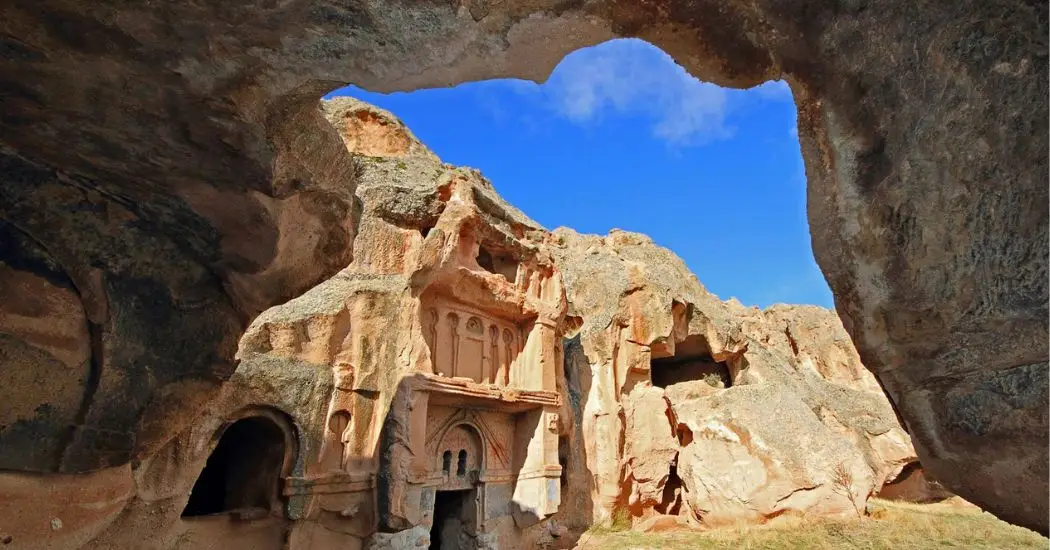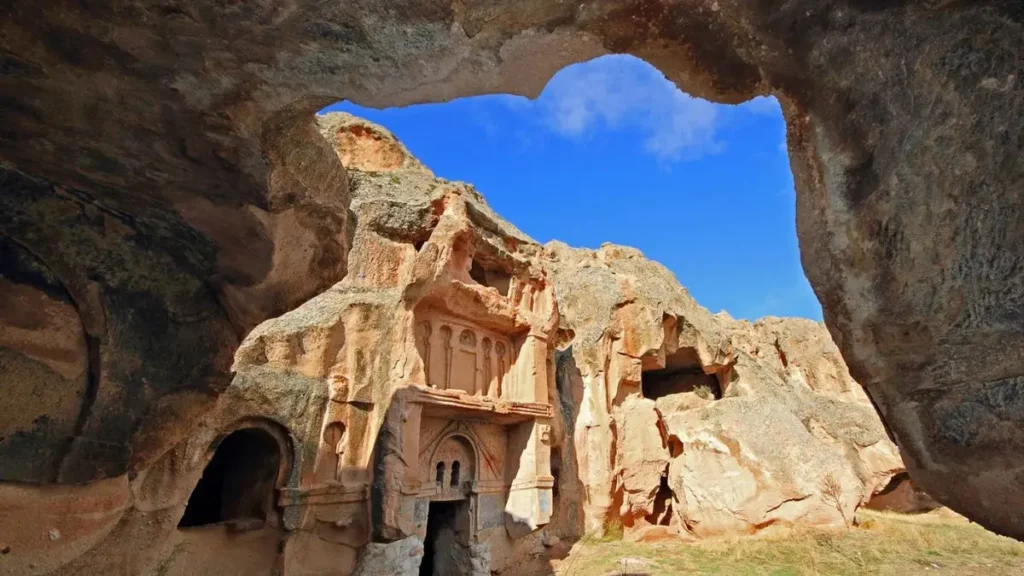
Cappadocia’s history is as rich and layered as its unique landscape.
Known as Kapadokya in Turkish, the region was shaped by ancient volcanic eruptions. It became home to early civilizations, Christian communities, and powerful empires, each leaving its mark across time.
From underground cities and rock-cut churches to Roman ruins and Seljuk architecture, Cappadocia’s past adds incredible depth and meaning to every valley, village, and stone you’ll encounter.
Understanding this history gives you a deeper context as you explore the region’s surreal beauty.
Geological Formation
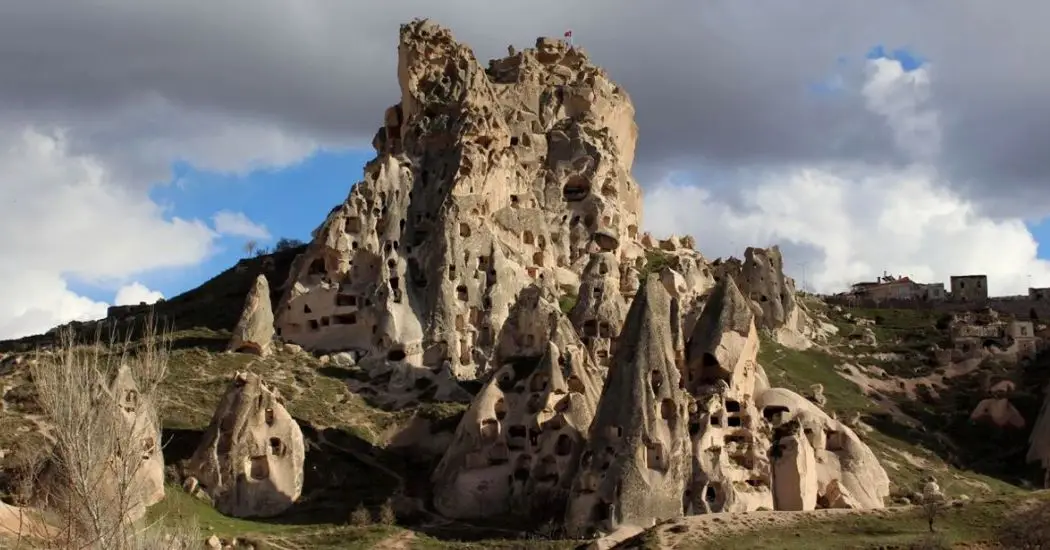
Millions of years ago, massive volcanic eruptions (from Mount Erciyes, Hasan Dağı, and others) blanketed this region in ash, which solidified into a soft rock called tuff.
Over eons, wind and water erosion worked, sculpting the bizarre yet beautiful landscape—think fairy chimneys, hoodoos, and canyon mazes.
So when you see those cone-shaped pillars and wavy valleys, you’re literally looking at nature’s artwork carved over thousands of years.
Want to see Cappadocia’s history come alive? Visit the Göreme Open-Air Museum—a must-see site with ancient cave churches and stunning frescoes.
Ancient Inhabitants
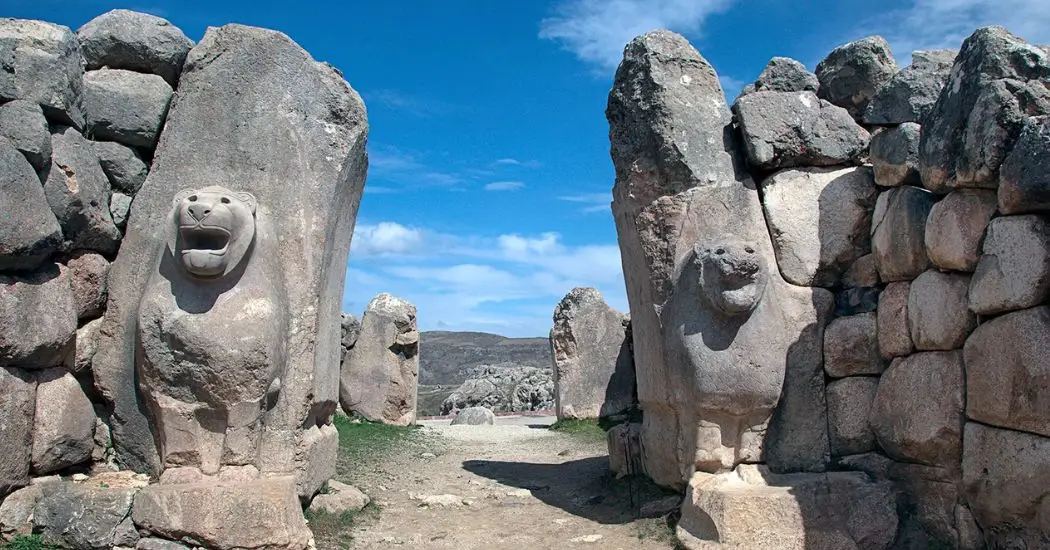
Humans have inhabited Cappadocia since at least the Bronze Age. The Hittites (around 1800–1200 BCE) were among the early civilizations here, and they may have begun carving caves and possibly the first underground tunnels.
The name “Cappadocia” itself likely comes from the Old Persian word Katpatuka, often said to mean “Land of Beautiful Horses,” a nod to the region’s wild and prized horses. Even today, you’ll hear about Cappadocia’s equestrian heritage—locals are proud of it.
Underground Cities
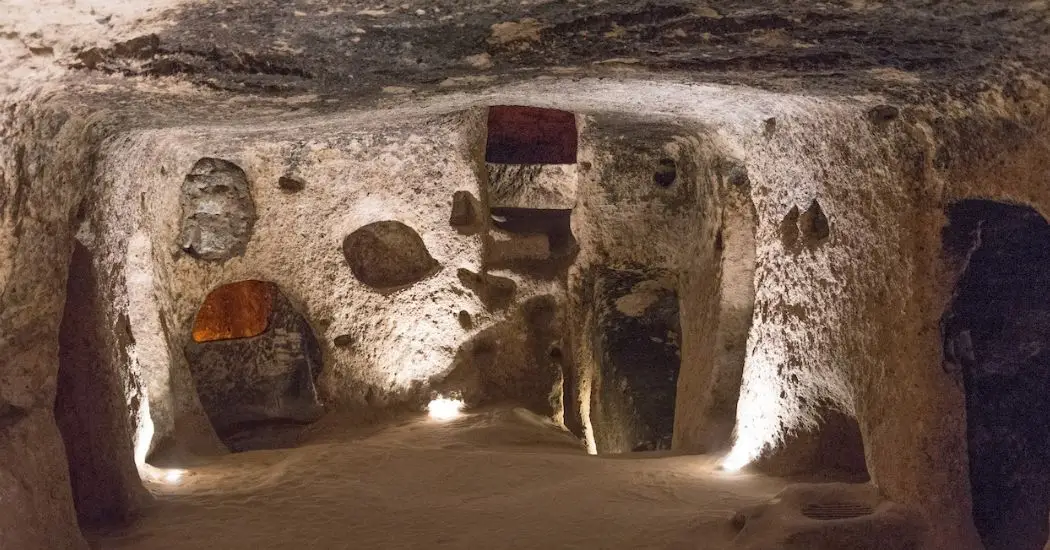
Over centuries, people in Cappadocia carved extensive underground cities as refugees from invaders. These multi-level bunkers are mind-blowing – complete with ventilation shafts, wells, kitchens, wineries, and trap doors.
The largest found so far, Derinkuyu, is some 85 meters deep and has at least eight levels. It could shelter thousands of people!
Historians believe early phases might date to the Phrygians (8th–7th century BCE), but they were later expanded during Roman and Byzantine times.
Early Christians famously used subterranean networks like Derinkuyu and Kaymaklı to hide during periods of persecution and during Arab raids in the 7th–9th centuries.
Incredibly, some underground cities were used even into the early 20th century by locals escaping conflict.
Discover Cappadocia’s lesser-known wonders with the Blue tour! Stroll historic Greek villages, hike serene valleys, visit hidden cave churches, and enjoy a relaxed day with lunch. Perfect for travelers looking to go off the beaten path!
Early Christian Era
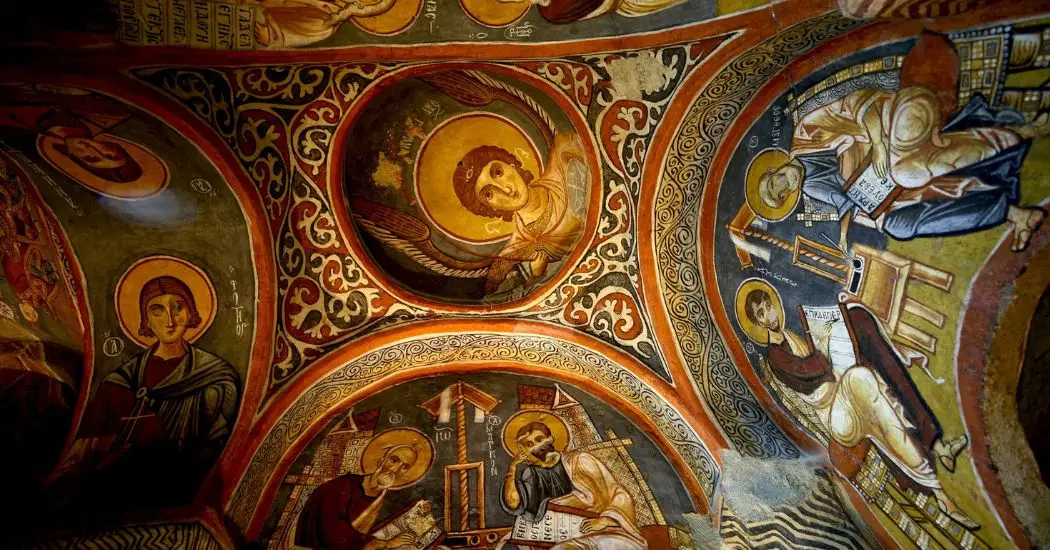
By the 1st–3rd centuries AD, Christianity spread to Cappadocia.
The region became a safe haven for Christians fleeing Roman persecution. They literally went underground or into remote valleys – which is why you see so many cave churches and hermit caves.
In the 4th century, Cappadocian theologians like St. Basil the Great helped establish monastic communities here.
Monks and nuns carved monasteries into the rocks; Cappadocia thrived as a center of Christian learning.
Most of the frescoed churches you see today were created between the 9th and 11th centuries during Byzantine rule.
This was a golden age for Cappadocia’s rock-cut architecture, yielding sites like Göreme’s churches, the amazing underground chapels, and even entire monastic valleys such as Soğanlı and Ihlara.
Medieval to Modern
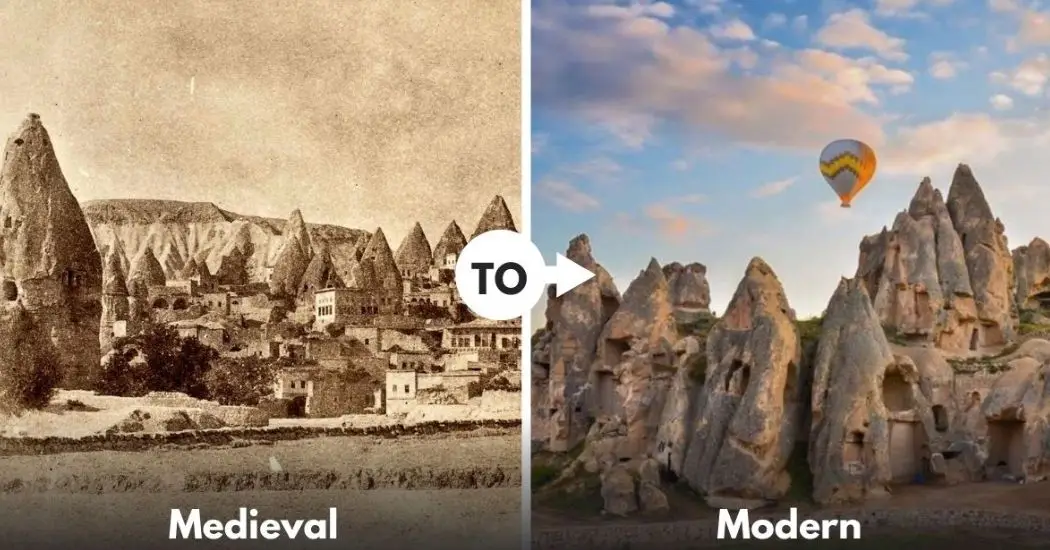
After the Battle of Manzikert (1071), Cappadocia gradually came under Seljuk Turkish control and later the Ottoman Empire.
The local Christian communities coexisted under Islamic rule for centuries, still carving caves. Some Greek Orthodox Christian communities lived in cave villages here up until the population exchange of 1923.
Eventually, many of the cave dwellings were abandoned in modern times as people built more conventional homes in the villages.
In the mid-20th century, scholars and the Turkish government “re-discovered” the importance of these sites, leading to preservation efforts.
By 1985, much of central Cappadocia (Göreme National Park and Rock Sites) was declared a UNESCO World Heritage area, recognizing its unique natural and cultural heritage.
Today, as you explore Cappadocia’s valleys, you’ll encounter layers of history—from volcanic rock born millions of years ago to homes and churches carved a thousand years ago.

